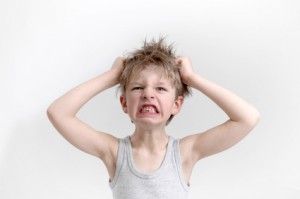When Your Children Get Angry
All kids get angry. I hate to say it, but it’s true. No matter how hard you try, your children will get angry. It can feel frightening and overwhelming when your children have an angry outburst. But, anger is not all bad. Anger is an emotion and all emotions have a purpose. When our children get angry, the goal is not to get rid of the anger but to learn how to manage the anger, to use the anger for growth. That end may include reaching a goal, solving a problem, or advocating for justice. How can a parent do this in the moment of their children’s anger? These tips might help.
- Accept and acknowledge your children’s anger. Anger is typically triggered by something. But it often continues when the angry person does not feel heard. The first tip in helping turn your children’s anger into an opportunity for growth is to make them feel heard by acknowledging their anger. You can do this by narrating the situation. Narrate how you perceive their anger, what physical manifestations you see of their anger, and what might have triggered their anger.
- As you acknowledge your children’s anger, take the time to label their emotion as well. Label their anger. Give it a nuanced definition to fit the situation—frustrated, angry, resentful, annoyed, irritated, furious, or impatient, whatever fits the situation. Labeling an emotion expands your children’s emotional vocabulary. Having a good emotional vocabulary will help your children manage their emotions independently in the future.
- The goal in steps #1 and #2 is to defuse the anger. You may have to set some boundaries around behavior at the same time. Do not try to stop the anger. Simple set boundaries on how to act on the anger. For instance, “You can be angry at me, but you cannot hit me in your anger.” Of course these types of boundaries only need to be spoken at this time if your children are crossing them in their anger.
- Problems are not solved in the heat of anger, so help your children calm. Take time to soothe them. In doing so, you are teaching them to soothe themselves. You are helping them build the neural connections necessary to soothe independently. Take a break. Let all those involved go to their “neutral corners.” It may take 20-30 minutes of focusing on a topic other than the topic that led to anger in order to calm down.
- As your children calm, begin to problem solve with them. Explore what triggered their anger, not just the situation that triggered their anger but what priority the situation represents as well. Did your children feel disrespected or taken advantage of? Did they believe someone took something that belonged to them, something material or personal? This may take some time as their anger may result from any number of priorities. After you discover the priority, explore ways to meet that priority and resolve their anger. Going through this process helps your children learn how to do it. Eventually, they will do it on their own.
- Finally, prepare for the next time. Consider a future situation and practice the solution discussed in step #5 in your mind’s eye. You can also role play a future situation and try out the solution. Make this practice fun.
These 6 steps can change the way your children respond to anger over time. Each time you go through this process with your children you move one step closer to them doing it all on their own.
-0 Comment-